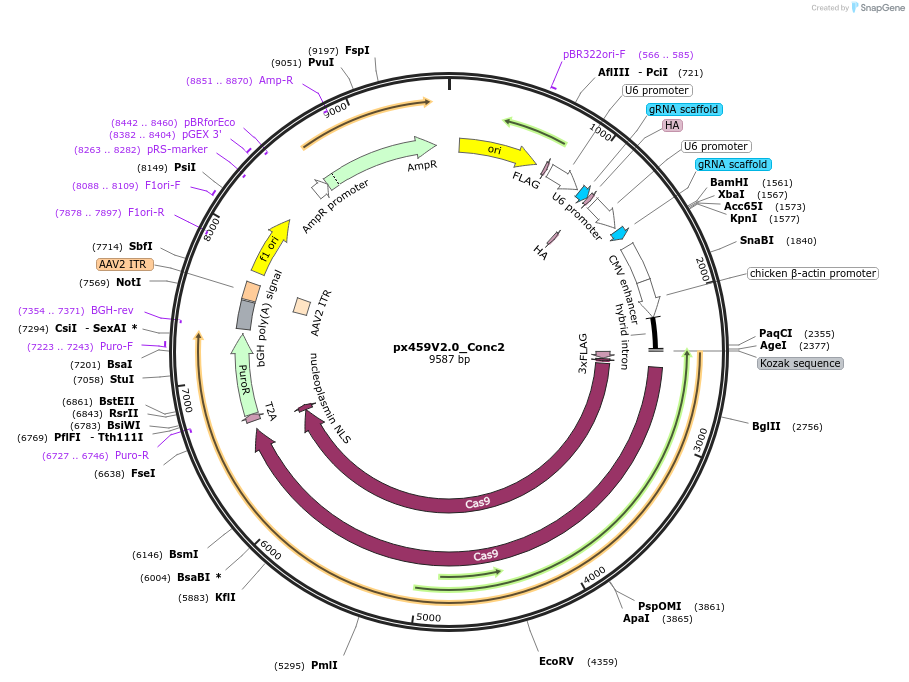-
Purpose(Empty Backbone) Empty concatemer vector in which 2 sgRNAs can be inserted; with Cas9 + Puro
-
Depositing Lab
-
Sequence Information
Ordering
| Item | Catalog # | Description | Quantity | Price (USD) | |
|---|---|---|---|---|---|
| Plasmid | 134451 | Standard format: Plasmid sent in bacteria as agar stab | 1 | $89 | |
Backbone
-
Vector backbonepSpCas9(BB)-2A-Puro (PX459) V2.0
-
Backbone manufacturerFeng Zhang
-
Modifications to backboneThe Backbone vector was PciI/XbaI digested and an amplified region from 3 gRNA concatemer vector (#84880) was inserted, which encodes for two U6 promotors.
-
Vector typeMammalian Expression, CRISPR
- Promoter U6
-
Selectable markersPuromycin
Growth in Bacteria
-
Bacterial Resistance(s)Ampicillin, 100 μg/mL
-
Growth Temperature37°C
-
Growth Strain(s)NEB Stable
-
Copy numberUnknown
Cloning Information
- Cloning method Restriction Enzyme
Resource Information
-
Supplemental Documents
-
Articles Citing this Plasmid
Terms and Licenses
-
Academic/Nonprofit Terms
-
Industry Terms
- Not Available to Industry
Trademarks:
- Zeocin® is an InvivoGen trademark.
Depositor Comments
The sgRNAs can get introduced by golden gate cloning like described in Andersson-Rolf A et al.: Simultaneous paralogue knockout using a CRISPR-concatemer in mouse small intestinal organoids. Dev Biol. 2016. doi: 10.1016/j.ydbio.2016.10.016. For more information see protocol.
These plasmids were created by your colleagues. Please acknowledge the Principal Investigator, cite the article in which the plasmids were described, and include Addgene in the Materials and Methods of your future publications.
-
For your Materials & Methods section:
px459V2.0_Conc2 was a gift from Daniel Stange (Addgene plasmid # 134451 ; http://n2t.net/addgene:134451 ; RRID:Addgene_134451) -
For your References section:
Universal and Efficient Electroporation Protocol for Genetic Engineering of Gastrointestinal Organoids. Gaebler AM, Hennig A, Buczolich K, Weitz J, Welsch T, Stange DE, Pape K. J Vis Exp. 2020 Feb 18;(156). doi: 10.3791/60704. 10.3791/60704 PubMed 32150173



